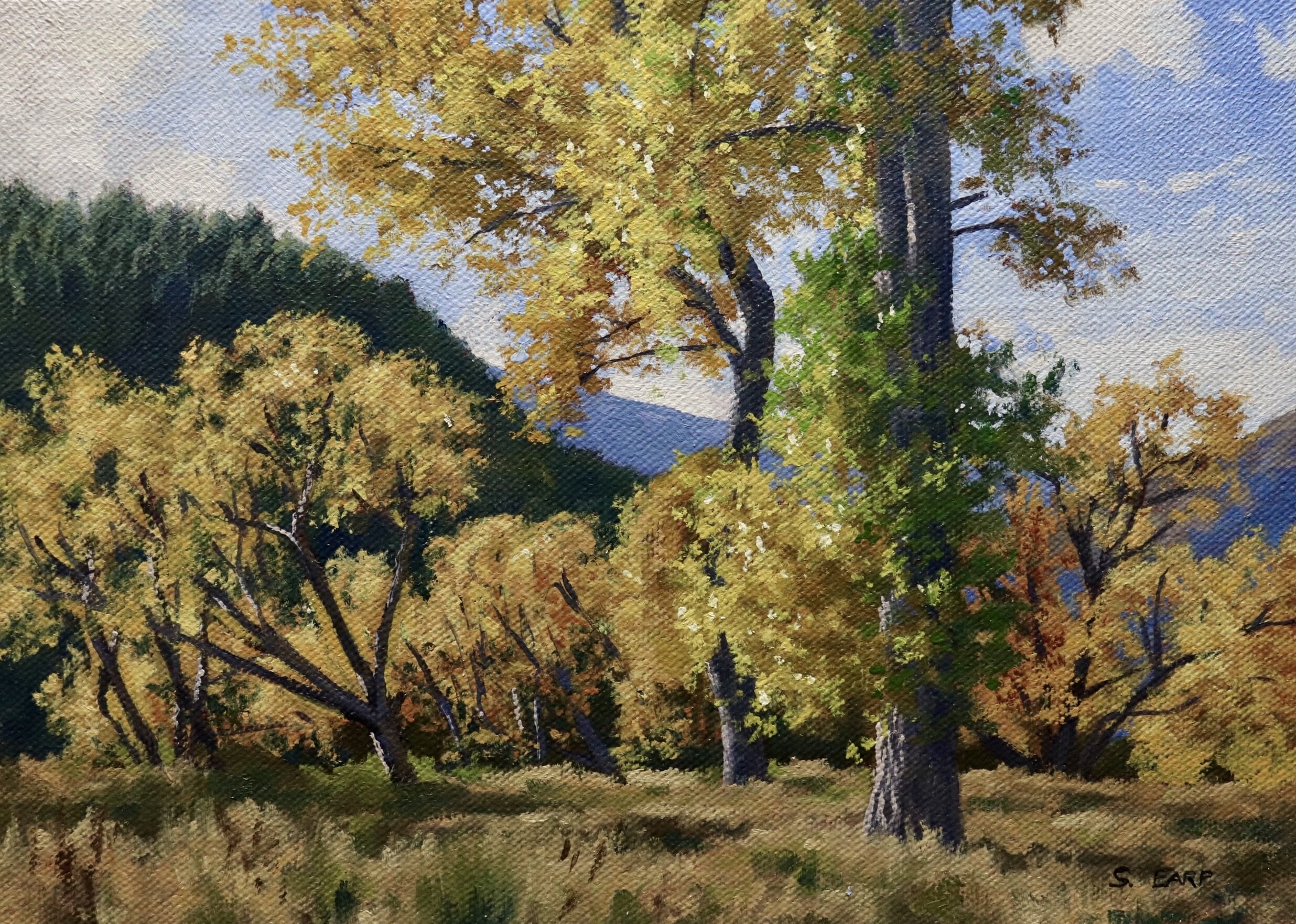
In this blog post I will show you how to paint this autumn scene that features willow and poplars trees and I will explain how to mix those autumn / fall colours.
Autumn is a wonderful time of year especially if you are a landscape artist, but autumn colours can be a challenge to paint. I hope in this blog post I can give you some ‘go to’ colour combinations for mixing autumn colours so you can confidently paint trees and foliage.
Reference Photo
Here is the reference photo I used to create this painting. Please feel free to copy it if you would like to have a go at painting this art work.

Colours
I painted this artwork using oil paint and the colours I used in this painting are as follows:
- Titanium white
- Burnt sienna
- Yellow oxide
- Cadmium yellow
- Quinacridone crimson
- Ultramarine blue
Brushes
Here is a list of the brushes I used in this painting:
- No.5 flat
- No.2 flat
- No.3 filbert
- No.1 round
- No.0 round (bristle and synthetic brushes)
Blocking-In The Painting
I am painting on an 25cm x 35cm linen panel which I’ve toned with a thin wash of burnt sienna. This warms up the painting and helps with colour and tone.
I sketched out the composition with a No.1 round brush and burnt sienna. I am using oil paint and I have mixed the burnt sienna with Liquin Original which thins the paint and speeds up the drying time.
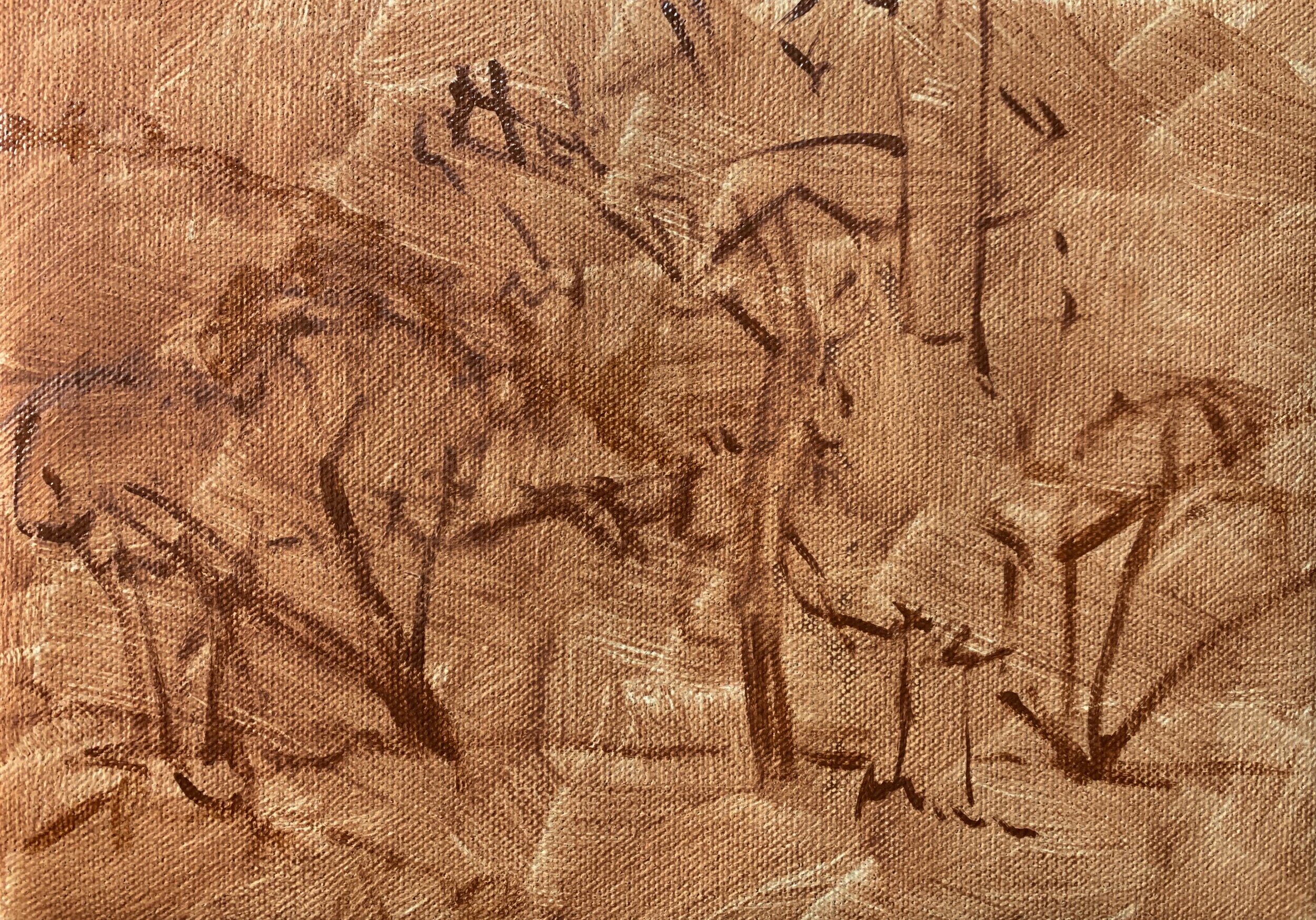
Whenever I start a painting I always think about the values first of all. Values are how light or dark a subject is and I always paint the dark values and shadows first as this makes it easier to then paint the areas in light afterwards and get the correct saturation of colours.
I begin the painting by marking in the main stems of the poplar trees. These are a neutral grey with a low chroma colour which I mixed using ultramarine blue, burnt sienna, quinacridone crimson and titanium white.
I use the same colours for the mountains in the background however I use more titanium white in the mix and ultramarine blue so the mixture has an overall blue cast to it.
The conifer trees on the hill in the mid ground are some of the darkest values to be found in this landscape. This dark value is going to help emphasise the light values in the willows trees. I mix the colour with yellow oxide, ultramarine blue and a little titanium white. I use these colours so the mixture has a green cast to it.

Once the main areas of the darkest values are marked in I paint the shadows in the tree foliage. As the tree foliage is yellow so the foliage shadows will be much lighter than if it were green and this is because yellow is a light value colour, so we need to keep this in mind.
I mix the tree shadow foliage with yellow oxide, ultramarine blue and quinacridone magenta. The mixture creates a warm brownish-green.

Now that I have established all of my dark values and shadows it’s now time to start adding the areas that are in the light. I start with the zone that is furthest away in the painting which is the sky and I wanted to communicate the bright afternoon sun but also keep the sky simple. For the clouds which are mainly backlit I use a mix of titanium white and a very small amount of burnt sienna.
For the sky I create a simple mix of ultramarine blue and titanium white.
The tree foliage are some of the largest masses within the painting and also some of the lightest values.
Mixing Autumn Colours
For the yellow autumn foliage I have kept my colour mixes simple. I start yellow oxide and then I increase the saturation by mixing in cadmium yellow. I adjust the value of the colour by mixing in titanium white which makes it lighter. I then round off the mixture with some quinacridone crimson. The addition of the quinacridone crimson is going to create some more golden tones within the mix.
For the willow trees in the mid ground I used less cadmium yellow in my yellow autumn mix to make a more golden yellow that is a little lower in chroma.
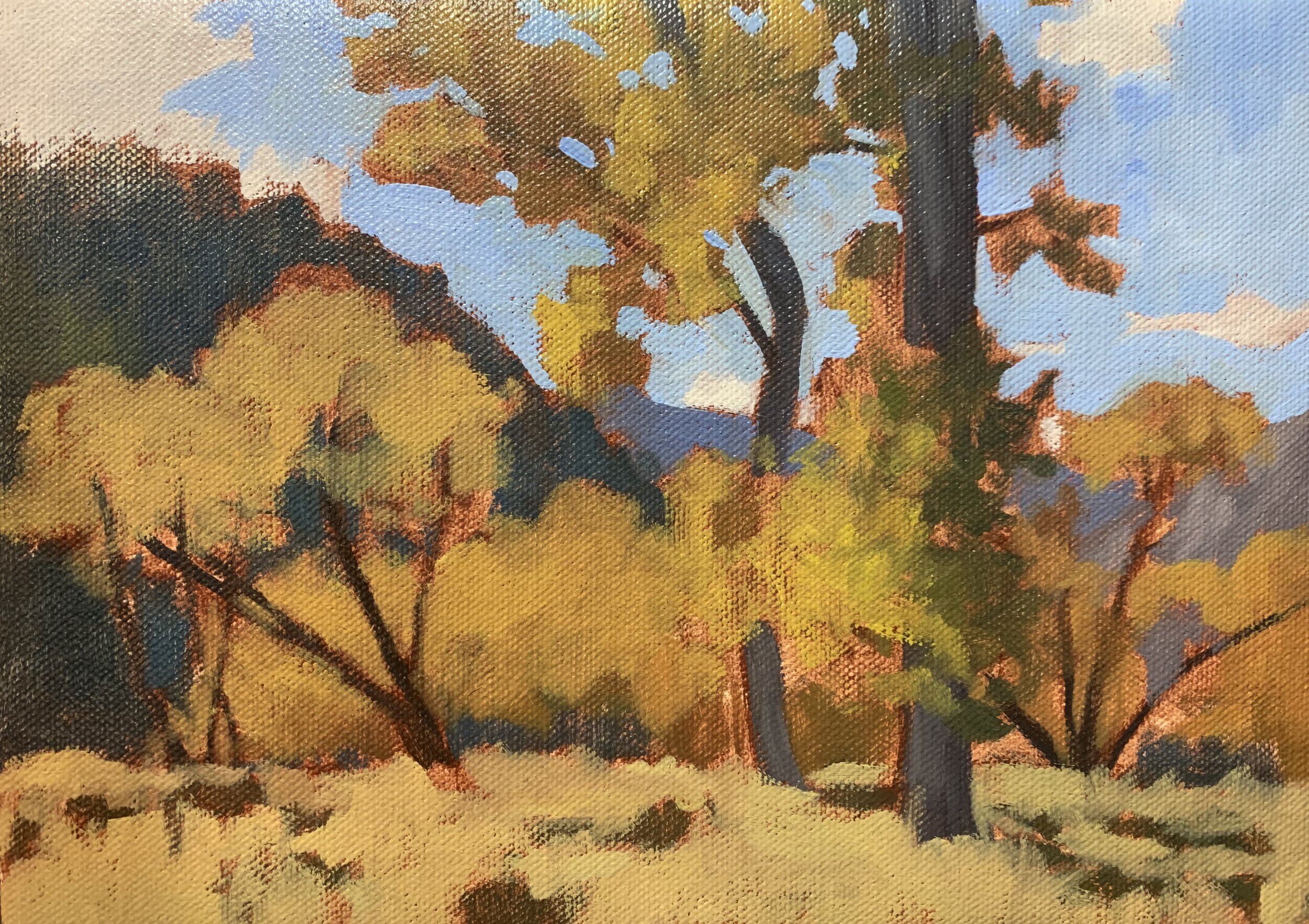
I have increased the saturation of the colour of the poplar leaves using the same colours to mix the autumn foliage but I have increased the saturation with more cadmium yellow.
Some of the leaves in the foreground poplar trees are still green which is going to add interest to the scene. I mix the green with cadmium yellow, a little yellow oxide, ultramarine blue, titanium white and I round off the colour with quinacridone crimson.
I have created a low chroma yellow for the grass in the foreground with a mix of yellow oxide, ultramarine blue, quinacridone crimson and titanium white.
I let the painting dry at this point so I can begin adding details.
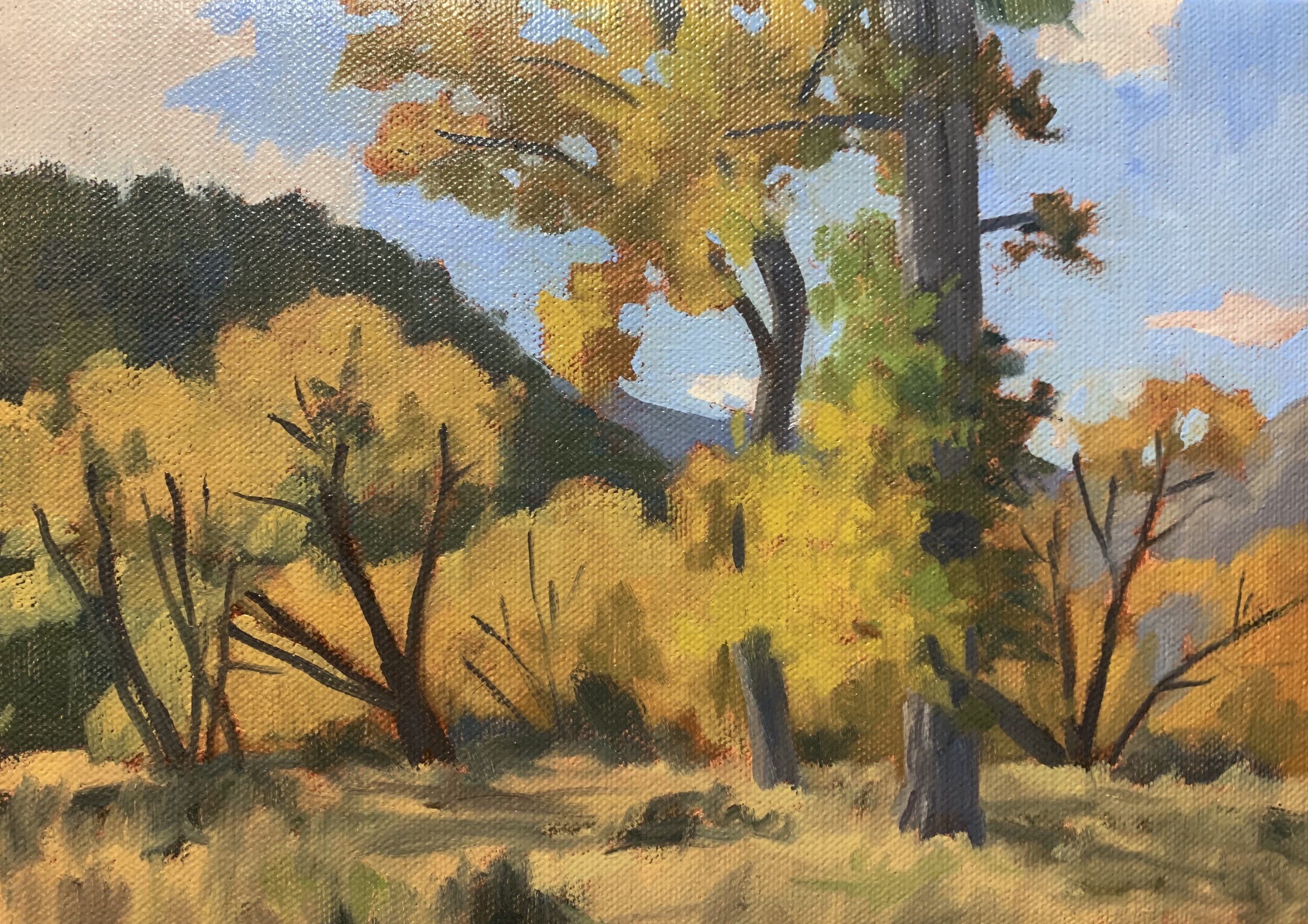
Adding Details
Now that the painting is dry I begin adding details starting off with the clouds and sky in the background. I used the same colours that I used during the block-in stage but I was generally tidying up and refining this zone.
I add a few highlights to the distant conifer trees on the hill with a mix of yellow oxide, ultramarine blue and titanium white.
I begin layering on more detail in the leaves of the mid ground willow trees with the same colours I used during the block-in stage, a mix of yellow oxide, cadmium yellow, titanium white and quinacridone crimson and I apply with paint with a No.3 filbert brush. I’m going more sparingly with the application of the paint so I can start building up layers and creating a feathery look to the foliage.
I add layers of paint to the main areas of foliage in the foreground poplar trees using the same colours I used in the block-in stage but I add a little more cadmium yellow in my mix as well as making the value of the colour lighter with more titanium white. Just like with the willow trees I use a No.3 filbert brush to apply the paint.
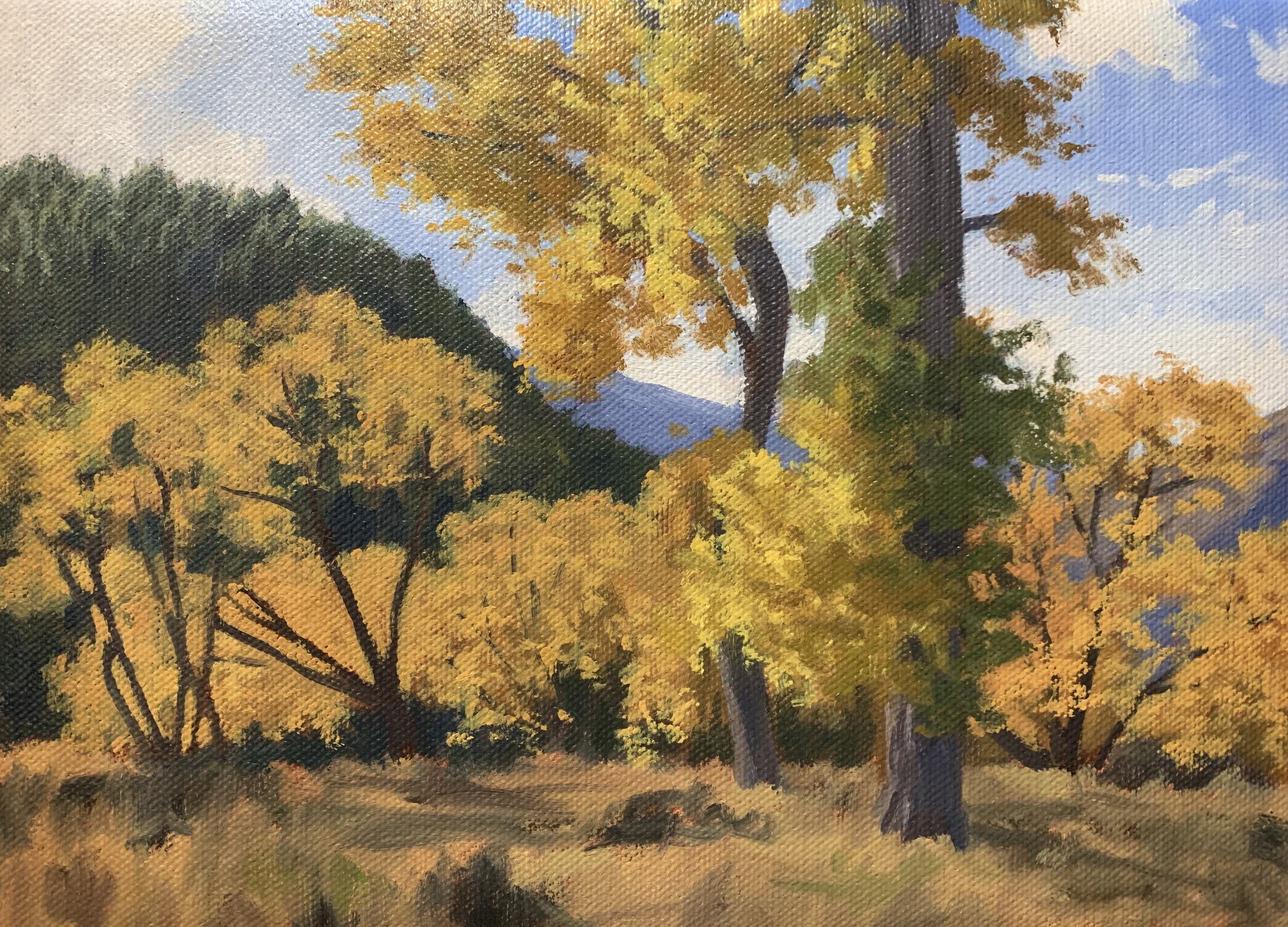
At the stage in the painting I start refining the tree canopies and I do this by filling in the negative spaces around them. I use my sky mix to mark in holes in the foliage which is going to add realism and interest to the trees.
I paint more stems and branches to the willow trees in the mid ground and overall I’m adding much more details to the painting in general. The branches and stems are a varying mix of ultramarine blue, burnt sienna, quinacridone crimson and titanium white.
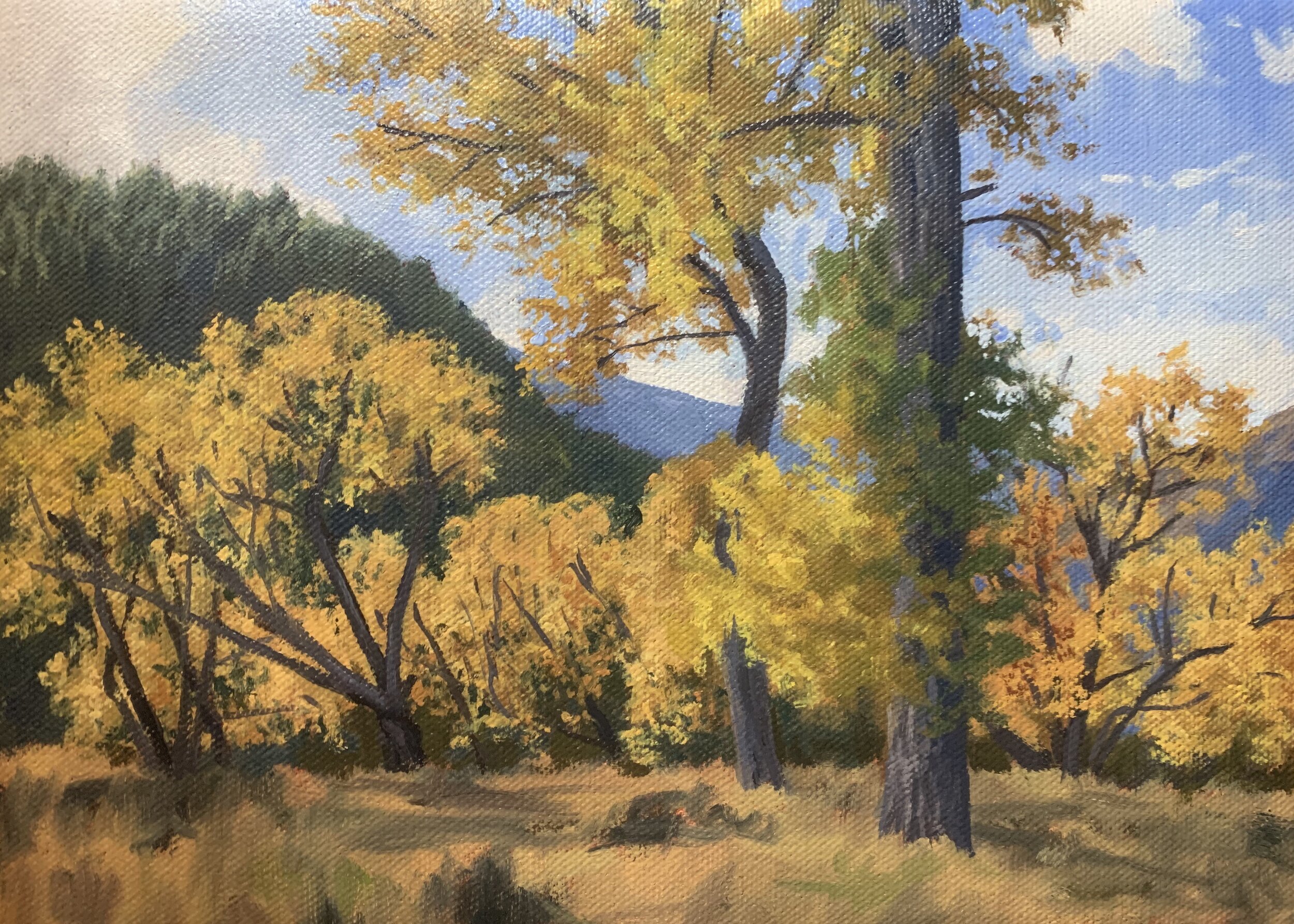
I build up the form and definition of the tree foliage by adding more layers of paint using the same colours as before but making the values lighter by mixing in more titanium white. I am generally using No.3 filbert brushes and No.2 flat brushes to apply the paint. I also add more layers to the grass in the foreground.
I paint the highlights on the poplar trunks with a mix of ultramarine blue, burnt sienna and titanium white.

Final Details
I finish the painting by adding in the final highlights to the leaves which I have saved until the end. Some of the glossy leaves in the poplar trees are shimmering in the bright sun. I just paint the odd leaf here and there using with a mix of titanium white and and a little cadmium yellow.

Thanks for reading 😊
